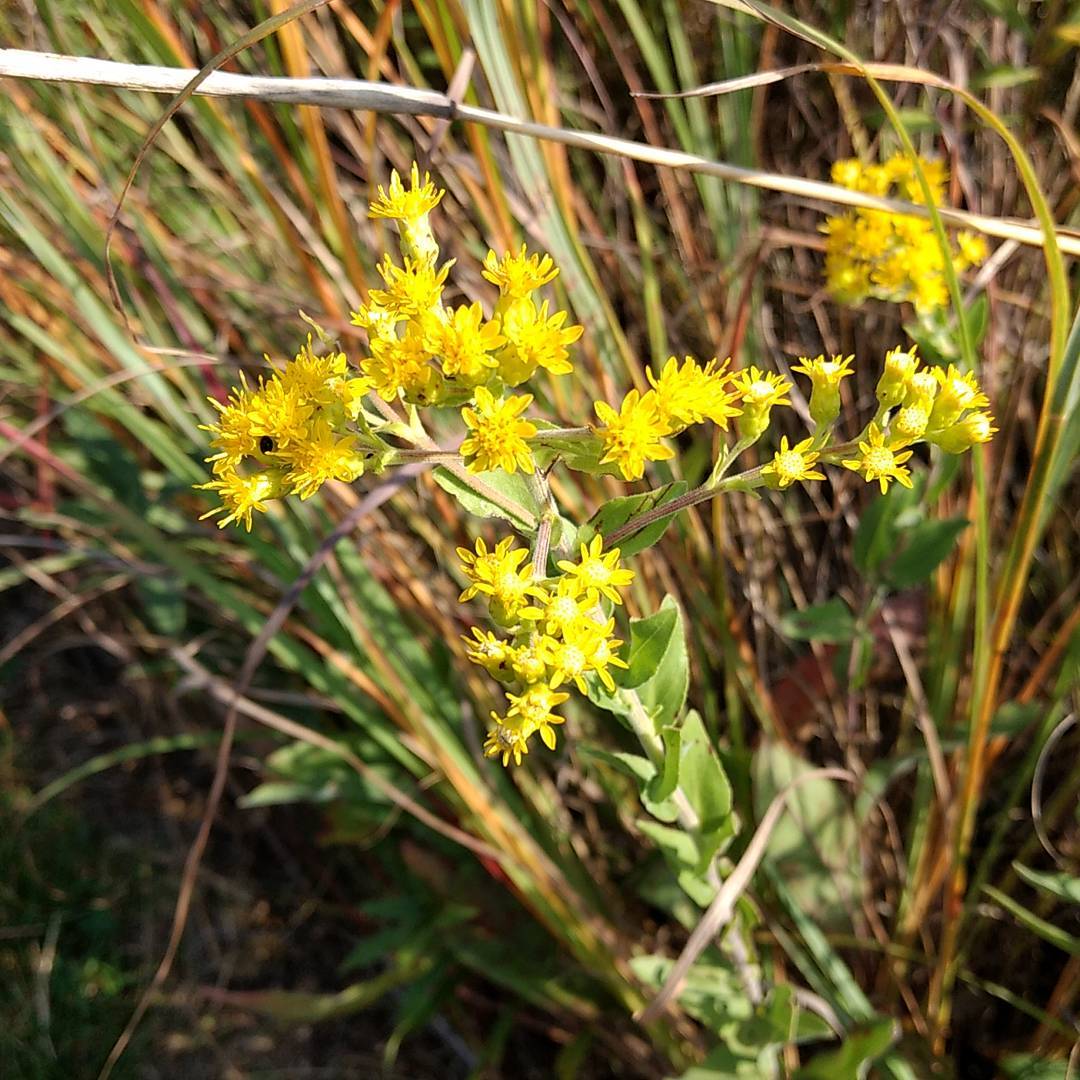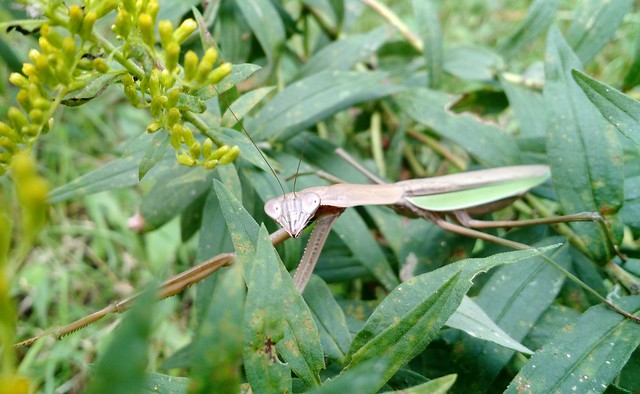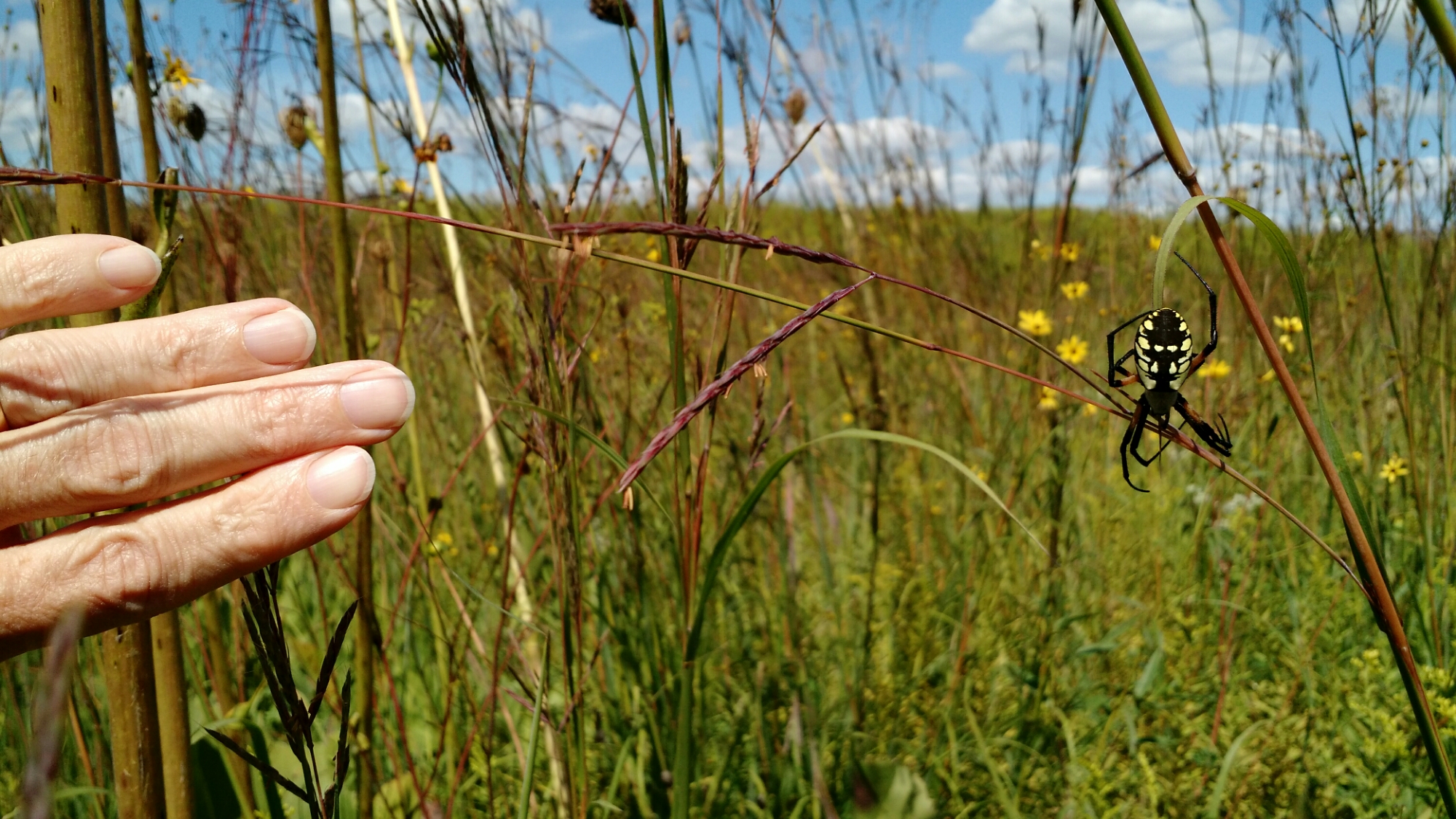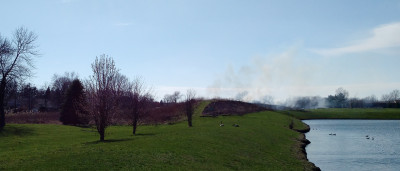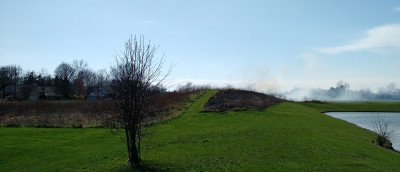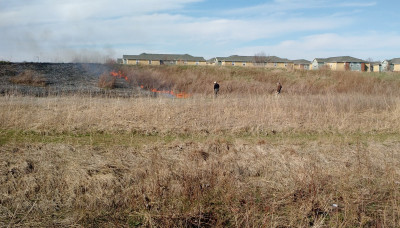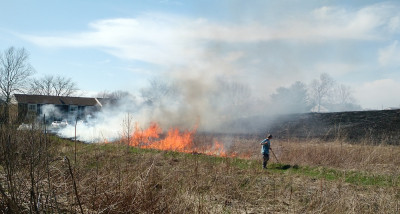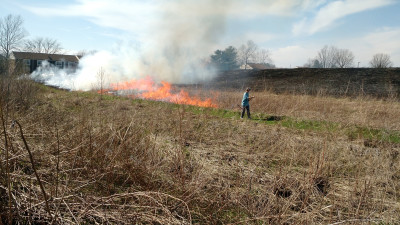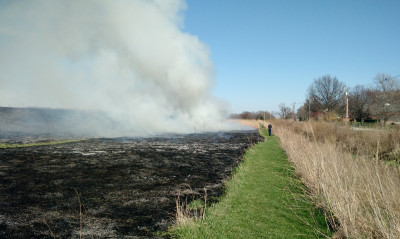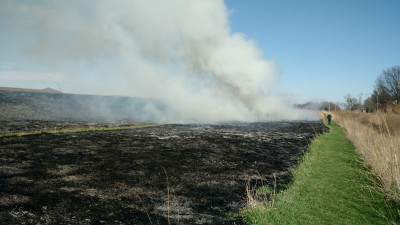Tag: prairie
Nothing like walking through tall
Nothing like walking through tall prairie grass to clean up a pair of muddy boots.
Predawn sky over Winfield Village Prairie
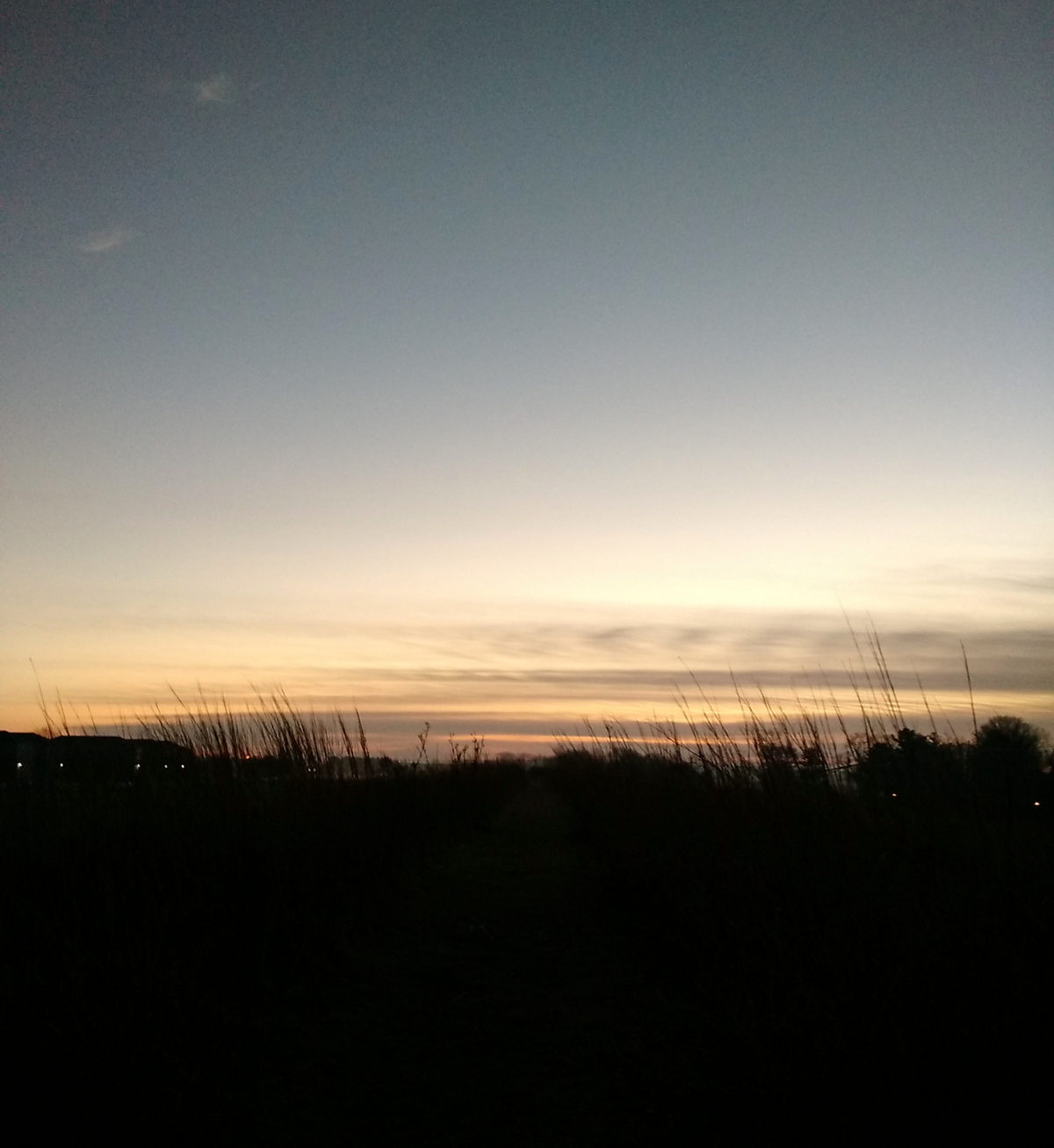
A pretty picture, plus a test of the “Image” post format.
Collecting prairie seeds
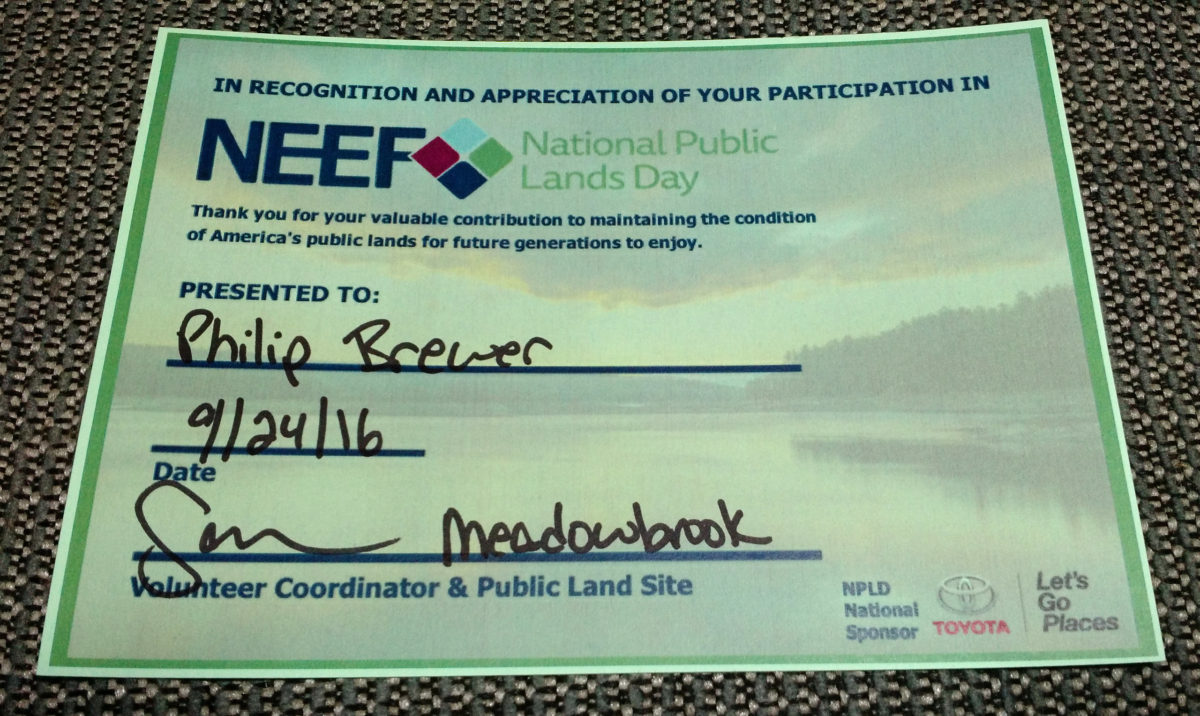
As part of becoming a master naturalist, Jackie has been going on volunteer work days at local natural areas. A couple of times I’ve gone along as well, most recently on Saturday to Meadowbrook Park where we gathered prairie seeds.
Jackie is trying to learn to identify all the plants during all the seasons, so she made a point of gathering some of each of the prairie species that the organizers wanted.
I figured I’d just try and be productive, so I focused on a plant I knew I’d be able to identify, and just gathered baptisia aka wild indigo aka false indigo. Over the course of 90 minutes or so I manged to fill a big paper grocery bag about three-quarters full of seed pods. Apparently the crop is better this year than last year, when weevils consumed nearly every seed. (Although I did see a lot of weevils—kind of disturbing because their size and shape makes it easy to mistake them for ticks.)
It was pretty easy. I spotted a baptisia from the sidewalk and gathered its seeds (leaving about half behind, so that there will be some seeds to disperse naturally). Then I looked around, spotted another plant a few yards away, and moved to that one. They’re not very dense in the prairie, but I don’t think I ever harvested a plant without being able to spot at least one more to move to, and then another visible from that one.
The baptisia flowering stalks seemed to be a favorite of some medium-sized black wasp. I skipped those stalks. They are also a favorite of a large green and brown praying mantis, which blends in surprisingly well for such a large insect. I saw three of them, barely noticing two before I started harvesting, and not noticing the third until it scrambled off the stalk.
(That’s the same kind of mantis, although not taken in the prairie.)
These seeds are going to be used right in Meadowbrook Park. Over the winter, the mowed area in the southwest corner of the park will be turned into more prairie.
The workday shifts are nominally 2 hours, but they don’t work us very hard. Especially when we’re all off working in different locations, they start to try to get us rounded up again after just 90 minutes or so. (I think especially when it’s hot they keep the shifts short.)
This particular work day was in celebration of National Public Lands Day, and while the workers refreshed ourselves with water, lemonade, and snacks back at the starting point, one of the organizers read an excerpt from a proclamation by Barack Obama in recognition of the day.
Then they gave anyone who wanted one a certificate recognizing our participation, and let us go.
Huge spider
Well shy of Shelobian proportions, but still I think the largest spider I’ve ever seen in the wild.
Spotted in the prairie, along the lower path. I put my hand in there for scale, but really didn’t want to get it quite close enough for that to work.
Updated to add: A bit of quick googling reveals that this is a yellow garden spider Argiope aurantia.
Green shoots in the prairie
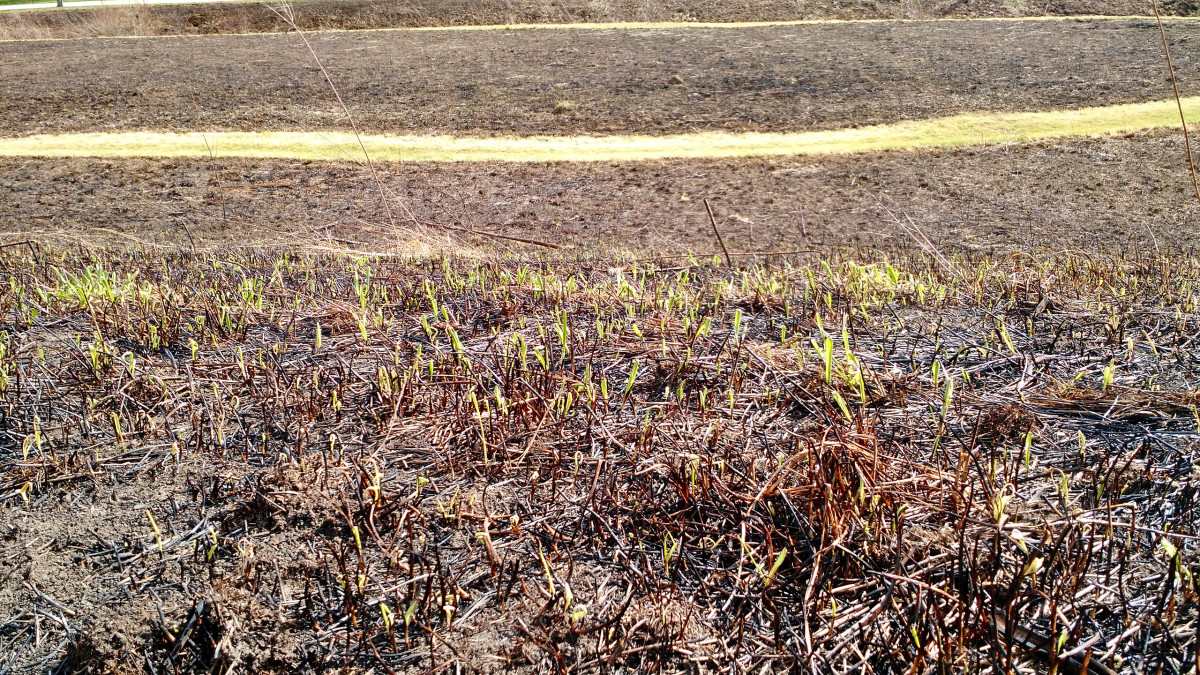
After the burn
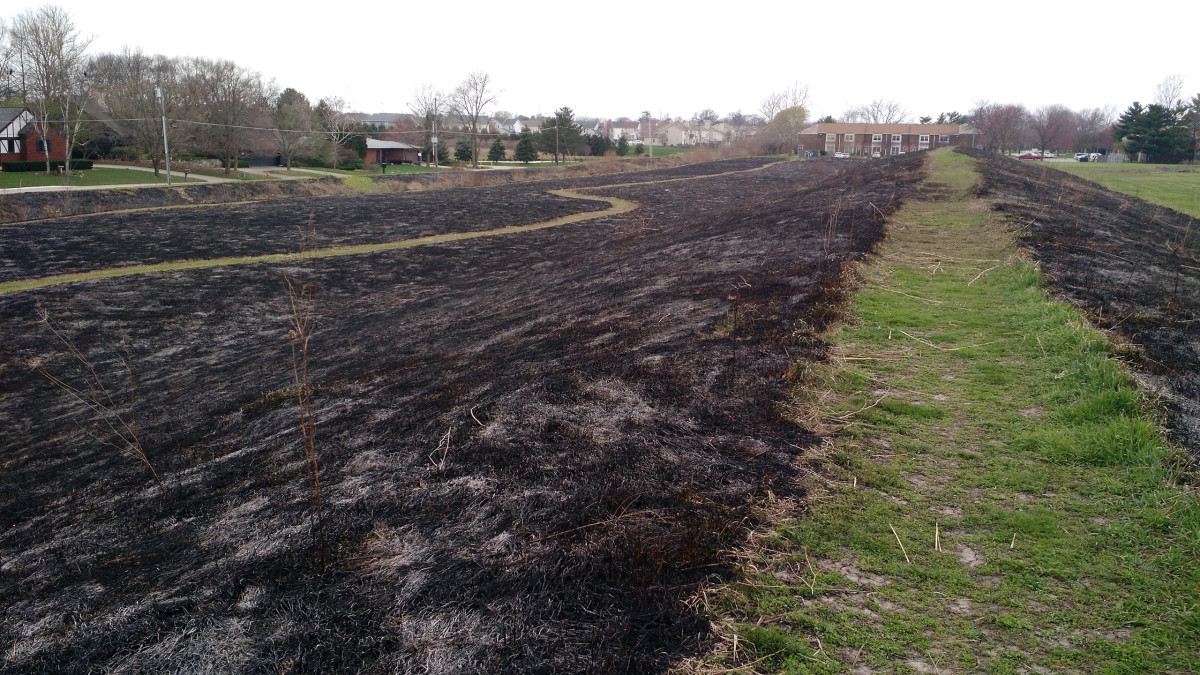
The picture at the top is from yesterday, just one day after the burn. It actually looked like it was still smokey in places, although I’m pretty sure all the fires were out. Probably it was just ash blowing around.
It rained yesterday evening, a nice soaking rain that should have settled the ash—and did, at least visually—but it still smelled freshly burned when I walked through this morning.
The robins seemed very pleased to have the charred prairie to pick through, and I also saw a cowbird.
It will be very interesting to walk through the prairie this spring (although a little more fun once the smell dissipates a bit further). I know from experience that the plants recover very quickly, and that soon there will be no sign of the burn—except that the prairie plants will come to dominate the invasive species that had begun to encroach. I’m not so sure about the animal life. How many snakes and turtles were lost in the fire? Will there be as many fireflies this year as last?
I’ll keep you posted.
Prairie burn
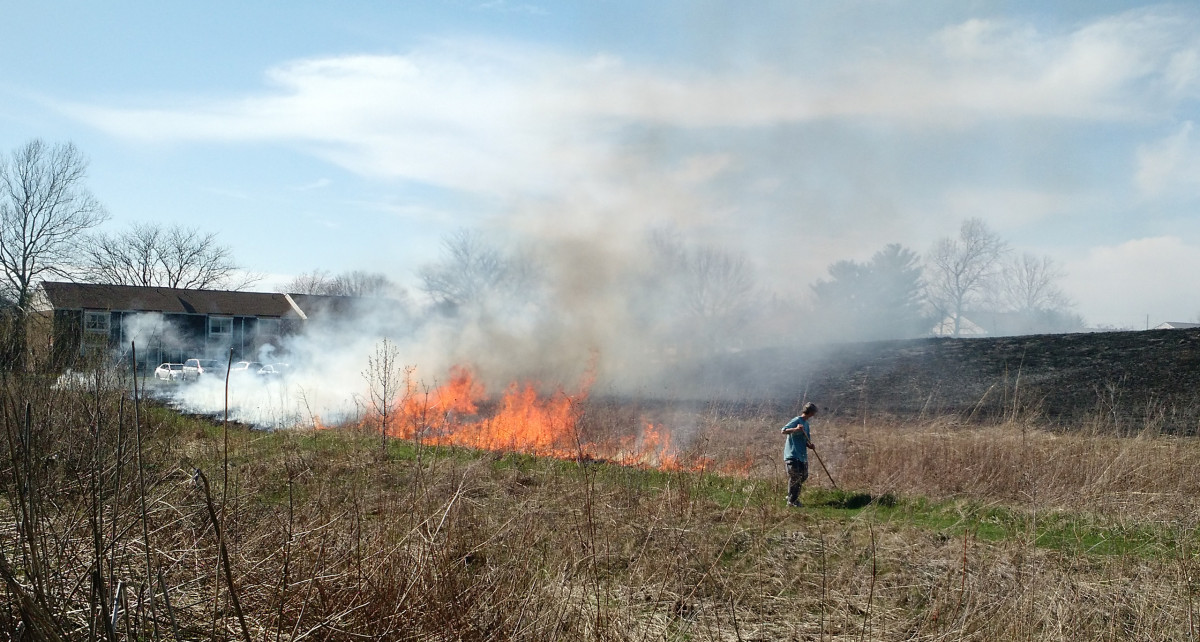
They burned the prairie behind Winfield Village this afternoon. While I was out for a run, I got some pictures:
Sore knees; decluttering my workspace

I hurt my knees and toes a few weeks ago, being too aggressive with a new natural-movement thing. Recovery from this sort of injury is best accomplished with a mixture of rest and gentle movement, and that’s what I’ve been doing. My toes got better pretty quickly, but my knees have continued to hurt.
Gentle movement in the form of walking did seem to help, but as the soreness persisted anyway, I started ramping up the amount of rest, figuring that was what was needed. My knees would get better and then get worse again. Extra rest didn’t seem to help. It was very frustrating.
Yesterday it occurred to me that the problem might be the way I was resting: I was spending extra time sitting at my computer.
In particular, I was spending a lot of time tucking my legs back under the chair, resting my feet on two of the chair’s wheels. When I wasn’t doing that, I’d stretch my legs out, but my left leg (the one with the persistently sorer knee) was constrained in how much it could stretch out, because I’d put the subwoofer for my computer speakers under the desk on the left.
So, this morning I made two changes. First, I moved the subwoofer out from under the desk, freeing up space to stretch out my left leg. Second, I lowered my chair, making it easier to put my feet flat on the floor, and less tempting to tuck my legs back under the chair.
I’d had the chair height set with the screen in mind, after some neck issues seven or eight years ago. Those had been resolved by getting computer glasses (I had been tipping my head back to read the screen through the progressive part of my glasses), so I feel free to rejigger the space to address other issues.
Not being an idiot, I’m also trying to spend less time at the computer today, and will go on doing so until my knee is all better.
On a related note: One of the things I’m less able to deal with during the dark days of winter is clutter. Unfortunately, I’m also less able to get my ordinary decluttering tasks done. In the past, this has led to a vicious cycle of clutter making me more depressed and depression making less able to tidy up my workspace. Doing my other workspace reconfiguring left me with a bit of momentum, so I carried on with some preemptive late-fall workspace tidying. Behold:
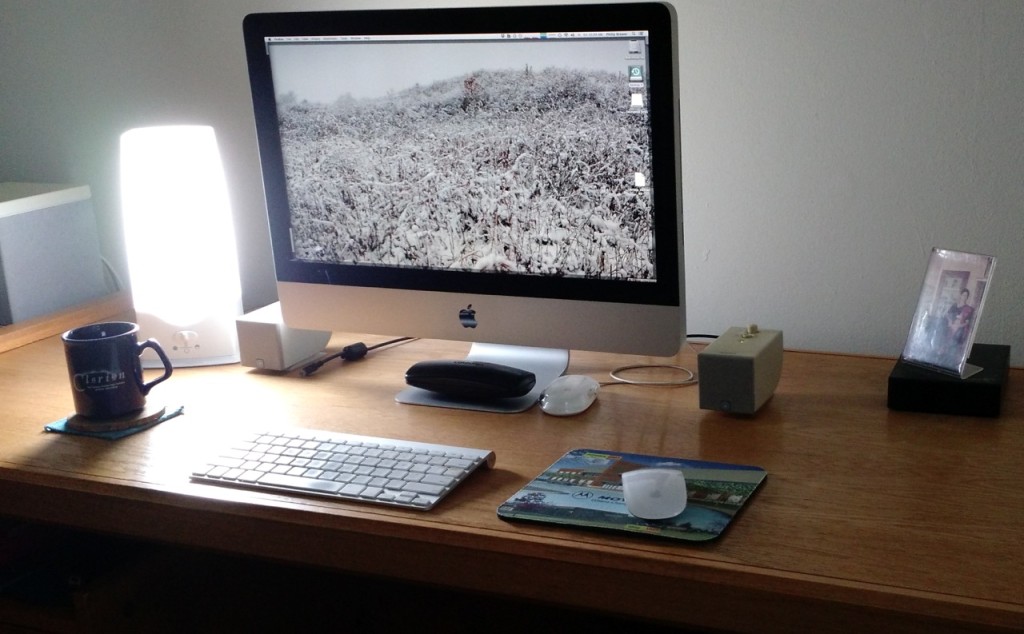 That grey box at the far left is the subwoofer, no longer under the desk.
That grey box at the far left is the subwoofer, no longer under the desk.
My screen desktop is a photo taken in the Lake Park Prairie Restoration, about five minutes walk from my house. Here it is on Flickr:
It’s a beautiful image and well worth clicking through to embiggen.
I share a lot more photos in my Flickr photostream than I end up using in blog posts. After you click through to admire that one, check out some of the others as well.
New growing regions less fertile

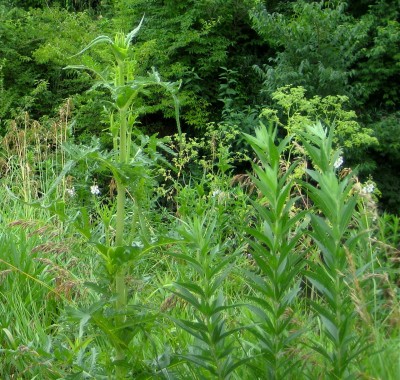
One utterly predictable consequence of climate change is that the price of northern farmland will rise as growing regions shift north.
Tobias Buckell yesterday shared a report that just this sort of price shift is now occurring—interesting to me because this result is not merely predictable: I predicted it my own self, way back when I was in high school.
Global warming was still pretty speculative then (in the 1970s), but people were already talking about the greenhouse effect and trying to figure what the result would be. At the time, I was mainly thinking about the geopolitical implications of shifting the growing regions north—how things would change if Canada and the (then) Soviet Union were suddenly way more productive of food, while places like the United States, China, and France suddenly less so.
What I discovered, though, was that those northern regions aren’t nearly as fertile as places like Illinois, where 8,000 years of tall grass prairie left an incredibly thick layer of rich soil.
No matter how perfect the climate is, Saskatchewan is not going to produce the bushels per acre of Illinois or Kansas. Their soil is not only less fertile, it’s also much more fragile than the soil of the tall grass prairies. The fertile layer isn’t as deep, so the land must be plowed with greater care, and it will in any case be more quickly depleted.
I’m sure there’s a lot more and better data available now than there was back then, but I doubt if it changes the fundamentals. Shifting growing regions means winners and losers, but it also means less total food production.

